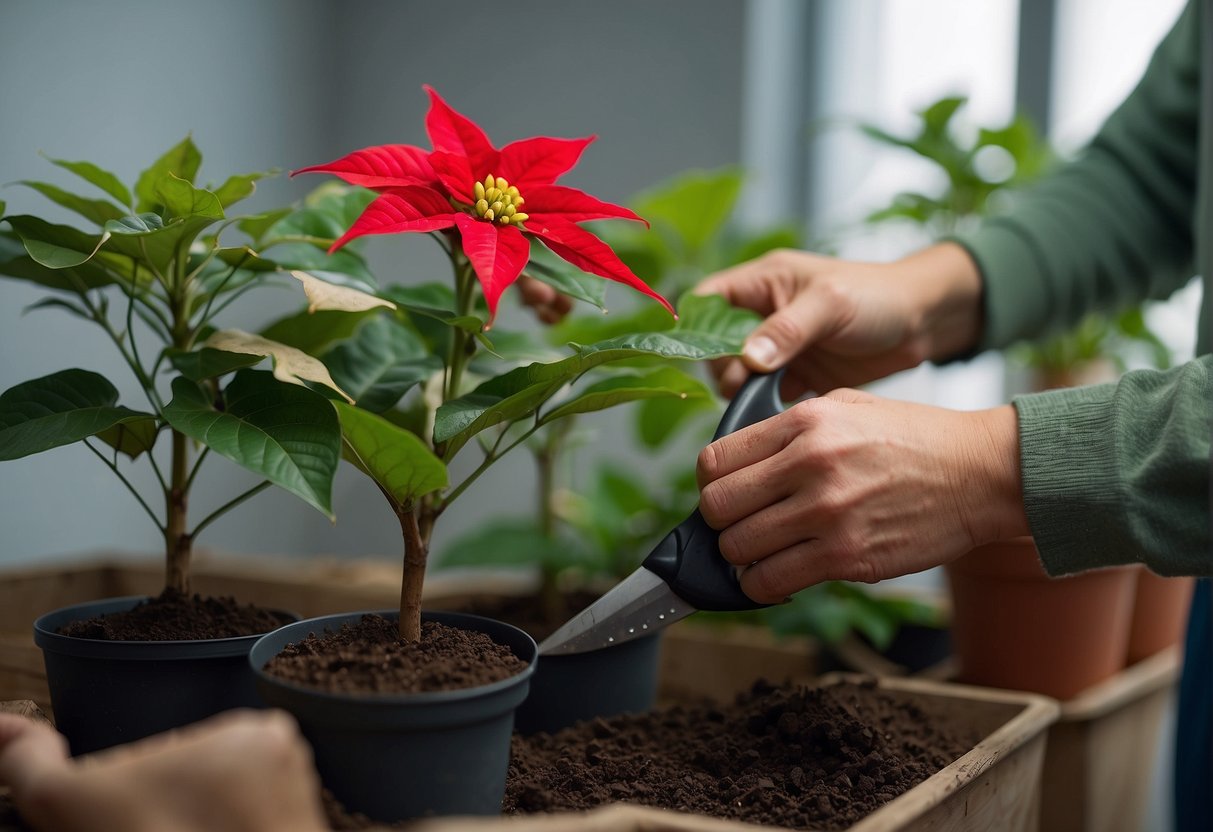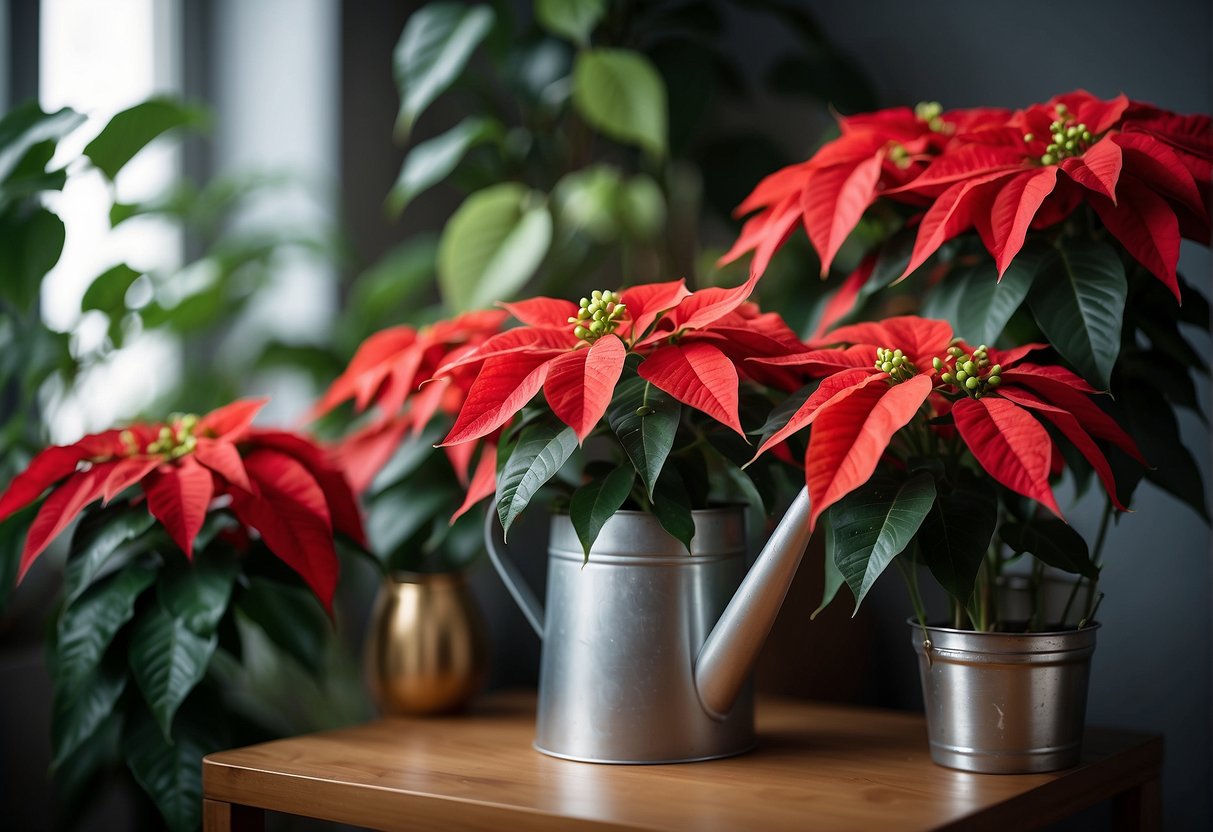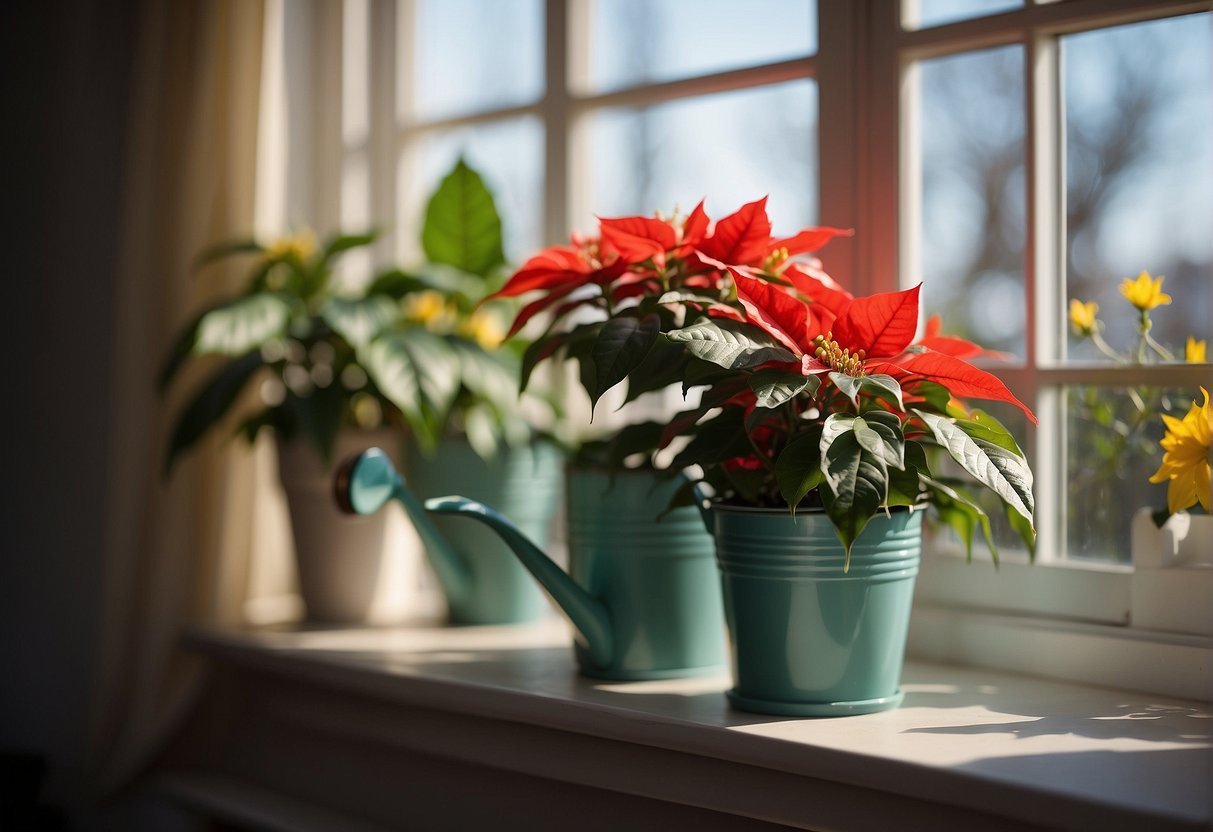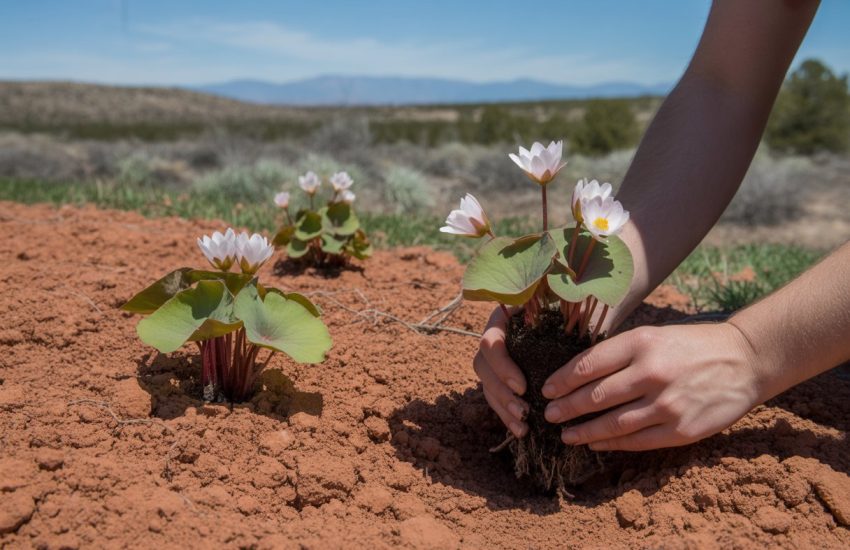How to Keep a Poinsettia Alive: Expert Tips and Tricks
Poinsettias are a staple in many households during the Christmas season. These vibrant red and green plants are a symbol of the holiday season, but they can be challenging to keep alive. Many people struggle to keep their poinsettias alive past the holiday season, resulting in a dead plant that is quickly discarded. However, with a few simple tips, it is possible to keep your poinsettia alive and thriving long after the holiday season has ended.

One of the most critical factors in keeping a poinsettia alive is proper watering. Overwatering or underwatering can quickly kill a poinsettia, so it is essential to find the right balance. It is recommended to water the plant when the soil feels dry to the touch, but be careful not to let it sit in standing water. Poinsettias also prefer a humid environment, so misting the leaves with water can help keep them healthy.
Another key factor in keeping a poinsettia alive is providing it with the proper amount of light. Poinsettias need plenty of bright, indirect light to thrive. Placing them near a south-facing window is ideal, but be sure to protect them from direct sunlight, which can scorch the leaves. With proper watering and lighting, your poinsettia can continue to brighten up your home long after the holiday season has ended.
Selecting the Right Location

When it comes to keeping a poinsettia alive, selecting the right location is crucial. Here are some factors to consider when choosing the perfect spot for your plant.
Light Requirements
Poinsettias need plenty of light to thrive, but direct sunlight can be too harsh and cause the leaves to wilt or burn. Instead, place your poinsettia in a location with indirect light, such as near a window that faces north or east. If your plant isn’t getting enough light, the leaves may turn yellow and fall off.
Avoiding Temperature Extremes
Poinsettias are sensitive to temperature changes, so it’s important to keep them away from drafty areas, doorways, heat vents, and fireplaces. They prefer temperatures between 60 and 70 degrees Fahrenheit during the day and slightly cooler at night. If your poinsettia is exposed to temperatures that are too hot or too cold, it may drop its leaves and wilt.
Protecting from Drafts
Drafts can be particularly harmful to poinsettias, causing the leaves to dry out and fall off. To protect your plant, avoid placing it near open windows or doors, and keep it away from air conditioning vents. If you notice your poinsettia is exposed to a draft, move it to a more sheltered location.
By considering these factors and taking the necessary precautions, you can help ensure your poinsettia thrives throughout the holiday season and beyond.
Watering and Humidity
Watering Techniques
Poinsettias require soil that is consistently moist but not waterlogged. Overwatering can cause root rot, which can be fatal to the plant. A good rule of thumb is to water the plant when the soil feels dry to the touch. This can be determined by sticking a finger about an inch into the soil. If it feels dry, it’s time to water.
When watering, it’s important to thoroughly saturate the soil. This can be achieved by watering until water runs out of the bottom of the pot. It’s also important to avoid getting water on the foliage, as this can lead to disease and fungal growth.
Humidity Considerations
Poinsettias prefer a humid environment, so it’s important to keep the air around the plant moist. This can be achieved by placing a tray of water near the plant or by using a humidifier. Another option is to mist the plant with water a few times a week.
It’s important to avoid standing water around the plant, as this can lead to root rot. If the plant is in a saucer, make sure to empty any excess water after watering.
Overall, proper watering and humidity are key to keeping a poinsettia alive and healthy. By following these tips, you can enjoy your poinsettia for weeks or even months.
Feeding and Fertilizing
Fertilizing Schedule
Poinsettias require regular feeding to maintain their health and promote blooming. It is recommended to fertilize them every two weeks during the growing season, which typically lasts from spring to early fall. However, during the winter months, when the plant is dormant, fertilization can be reduced or stopped altogether.
Choosing the Right Fertilizer
When it comes to choosing the right fertilizer for poinsettias, it is important to select a balanced houseplant fertilizer with equal amounts of nitrogen, phosphorus, and potassium. A fertilizer with a ratio of 20-20-20 is ideal for poinsettias.
It is also essential to avoid over-fertilizing poinsettias, as this can lead to burnt roots and damage the plant. One should always follow the instructions on the fertilizer package and apply it in the recommended amount.
In addition to commercial fertilizers, compost can also be used to feed poinsettias. Compost provides a slow-release source of nutrients and helps to improve soil quality. One can mix compost into the soil before planting or apply it as a top dressing.
Overall, feeding and fertilizing are crucial aspects of poinsettia care. By following a regular fertilizing schedule and choosing the right fertilizer, one can ensure that their poinsettias remain healthy and vibrant throughout the year.
Pruning and Repotting

When to Prune
Pruning is essential to keep the poinsettia plant healthy and encourage new growth. It is recommended to prune the plant in early spring when the plant has finished blooming and the danger of frost has passed. The pruning process involves cutting back the stems of the plant to about 4-6 inches above the soil level. This will encourage new growth and help the plant to become bushier.
How to Repot
Repotting is necessary when the roots of the poinsettia plant start to outgrow the container. It is recommended to repot the plant every two years. The best time to repot the plant is in early spring when the plant has finished blooming. The process involves gently removing the plant from the container and inspecting the roots. If the roots are circling around the container, it is necessary to trim them back. Then, the plant should be placed in a larger container with fresh potting soil. It is important to water the plant thoroughly after repotting.
When repotting, it is important to choose a container that is slightly larger than the current one. The container should have drainage holes to prevent water from accumulating in the soil. The potting soil should be well-draining and rich in nutrients. A mix of peat moss, perlite, and vermiculite is ideal for poinsettia plants.
Overall, pruning and repotting are crucial for the health and growth of poinsettia plants. By following these simple steps, gardeners can ensure that their plants thrive and produce beautiful blooms year after year.
Encouraging Reblooming

Poinsettias are known for their vibrant red bracts, which are often mistaken for flowers. However, the actual flowers are the small yellow structures in the center of the bracts. To encourage reblooming, it is important to understand the plant’s blooming cycle and the conditions required for it to flower again.
Creating the Right Environment for Blooming
Poinsettias require specific conditions to bloom again, including 14 hours of darkness per day for at least six weeks. During this period, the plant should be kept in a closet or dark cupboard where it will not be exposed to any light. After this time, the plant should be moved to a location where it can receive full sun or morning sun for at least six hours per day.
In addition to light, poinsettias also require specific temperatures to bloom again. During the six-week period of darkness, the plant should be kept at a temperature between 60-70°F (15-21°C). After this period, the plant should be moved to a location with a temperature between 70-75°F (21-24°C) during the day and 60-65°F (15-18°C) at night.
Timing and Techniques for Bloom Promotion
Timing is crucial when it comes to promoting reblooming in poinsettias. It is important to start the six-week period of darkness at the right time to ensure that the plant will bloom again during the holiday season. The ideal time to start the darkness period is around October 1st.
In addition to providing the right environment, there are also techniques that can be used to promote blooming. One technique involves pinching back the plant in early spring to encourage branching and the development of flower buds. Another technique involves fertilizing the plant with a high-phosphorus fertilizer to promote flowering.
Overall, with the right conditions and techniques, it is possible to encourage poinsettias to rebloom and bring holiday cheer year after year.
Dealing with Common Problems

Pest Management
Poinsettias are prone to aphid infestations, which can cause curling and wilting of leaves. To manage aphids, use a mild insecticidal soap or neem oil. Be sure to cover both the top and bottom of the leaves, as well as the stems. If the infestation is severe, consider using a systemic insecticide.
Disease Prevention
Preventing diseases is key to keeping a healthy poinsettia. One common disease is Botrytis blight, which causes leaf drop and a gray mold on the leaves. To prevent Botrytis blight, make sure the plant is not overcrowded and has good air circulation. Also, avoid getting water on the leaves when watering, as this can promote the growth of mold.
Handling Environmental Stress
Poinsettias can be sensitive to changes in their environment, such as temperature and humidity. To avoid stress, keep the plant in a room with a consistent temperature between 60-70°F (15-21°C) and a humidity level of 40-60%. Avoid placing the plant near drafts, as this can cause wilting. If the plant is exposed to cold temperatures, it may produce milky sap, which can be irritating to the skin. Be sure to wear gloves when handling the plant if this occurs.
By following these tips, you can keep your poinsettia healthy and beautiful throughout the holiday season and beyond.
Frequently Asked Questions

What are the optimal conditions for poinsettia care indoors?
Poinsettias thrive in temperatures between 60-70°F (15-21°C) and require bright, indirect light. Keep them away from drafts, as they are sensitive to sudden temperature changes. Avoid placing them near heating vents or air conditioning units.
How can I encourage my poinsettia to rebloom next season?
Poinsettias require long nights and short days to initiate blooming. Starting in October, provide 14 hours of uninterrupted darkness each night and 10 hours of bright light during the day. This can be achieved by placing the plant in a dark closet or covering it with a light-proof bag each night. Continue this for 6-8 weeks until the bracts (colored leaves) begin to show color.
What is the proper watering schedule for a poinsettia plant?
Water your poinsettia when the soil feels dry to the touch. Be sure to water thoroughly, allowing excess water to drain out of the bottom of the pot. Avoid letting the plant sit in standing water, as this can lead to root rot. Overwatering can also cause the leaves to yellow and drop.
When and how should I move my poinsettia outside?
Poinsettias are sensitive to cold temperatures and should not be moved outside until all danger of frost has passed. Gradually acclimate the plant to outdoor conditions by placing it in a shaded area for a few hours each day, gradually increasing the amount of sunlight it receives. Be sure to bring the plant back inside before the first frost of the season.
How do I know if my poinsettia is getting enough light?
Poinsettias require bright, indirect light to thrive. If the leaves begin to yellow or drop, it may be an indication that the plant is not receiving enough light. Move the plant to a brighter location, but avoid direct sunlight, as this can scorch the leaves.
What are the signs that my poinsettia is not thriving and how do I address them?
If the leaves begin to wilt, turn yellow, or drop, it may be an indication of overwatering or underwatering. Adjust the watering schedule accordingly. If the plant is not receiving enough light, the leaves may also begin to yellow or drop. Move the plant to a brighter location. If the plant is exposed to cold temperatures or drafts, the leaves may also wilt and drop. Keep the plant away from drafts and maintain a consistent temperature.


